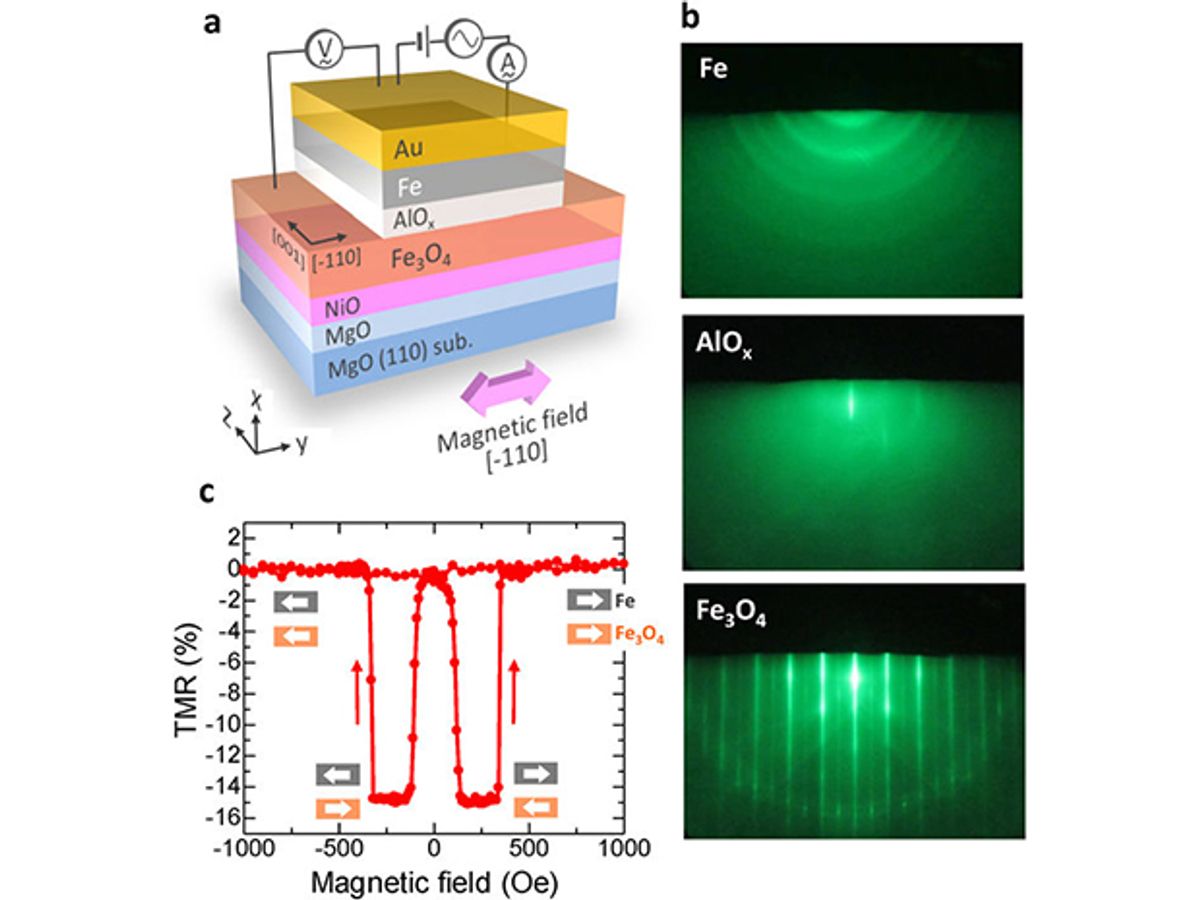Two years ago, research out of Brown University offered up a new approach to increasing the electric storage capacity in magnetic tunneling junctions—which among other things form the backbone of read heads in giant magnetoresistance (GMR) hard disk drives.
Now the same Brown researchers in collaboration with Japanese scientists have found a way to invert the effect and lower the capacitance of these junctions. The results could lead to the development magnetic sensors for “spintronic” applications including computer hard drives and next-generation random access memory (RAM) chips.
In their initial research two years ago, the Brown researchers were looking at the phenomenon of magnetocapacitance, which occurs when metal-insulator-metal heterostructures change their capacitance in the presence of an external magnetic field. The Brown team discovered that by manipulating the spins of electrons in a magnetic tunneling junction you can produce a large increase in the junction’s ability to store an electric charge—or its capacitance. This particular kind of magnetocapacitance has been dubbed tunnel magnetocapacitance (TMC).
In the latest research described in the journal Scientific Reports, the Brown team collaborated with researchers from Hokkaido and Tohoku Universities in Japan and applied essentially the same technique they developed two years ago for manipulating the spins of electrons of these magnetic tunneling junctions, but this time changed the materials that make up the junctions.
This change in materials results in the electrons spinning in the opposite direction of typical tunnel magnetocapacitance. Instead of producing a very large magnetocapacitance, the new approach leads to a low magnetocapacitance.
With the ability to change the amount of capacitance by manipulating the spins of the electrons, the researchers believe that it could serve as another tool in spintronics, offering greater flexibility by providing a choice between two types of magnetocapacitance.
To accomplish the inverse effect, the international team of researchers replaced one electrode material that was originally made from a cobalt-iron-boron alloy with a special iron oxide, which is a magnetic metal.
This is a major change, said Gang Xiao, a professor of physics at Brown and co-author of the research, in an e-mail interview with IEEE Spectrum, because the property of the special iron oxide is fundamentally different from the original iron alloy. Xiao also explained that the researchers changed the other electrode material from the iron alloy to just iron, but in this case the properties of the two materials are fundamentally similar.
“Interestingly, when the special iron oxide is magnetized in the same direction as iron, the electron spins—which contribute to the electric current—of the iron oxide is aligned in the opposite direction to those of iron. This led to the discovery of inverse tunnel magnetocapacitance (iTMC),” says Xiao.
In the configuration developed two years ago, the magnets of the two electrodes are aligned in the same direction. This means that the probability that electrons will tunnel through the insulating barrier is high. It also means that the tunneling speed of electrons is high. As a result, the electric dipoles (positive and negative charges) that are formed by electrons and holes at the interface between the cobalt-iron-born alloy and the magnesium oxide insulating layer can quickly change according to the alternating current (AC) electric field.
This all produced a very large electric polarization, meaning the number of negative and positive charges was very high. With this high electric polarization comes a large dielectric constant, which is a measure of a material’s ability to store electrical energy in an electric field. Because the capacitance is proportional to the dielectric constant, the capacitance is large for the parallel configuration.
In the inverse tunnel magnetocapacitance (iTMC) mechanism, the effect is the opposite to tunnel magnetocapacitance (TMC). When the parallel configuration is used with these different materials, the tunneling probability of the electrons become lower because of the fundamental difference in the two magnetic electrode materials. When the tunneling probability of electrons decreases, so too does the junction’s capacitance. This also means that the electric dipoles cannot follow the change of the AC electric field as fast. So, the electric polarization is small, resulting in a small capacitance.
Xiao believes that this technology will be applicable to a wide range of devices, such as magnetic sensors for hard drives, electronic compasses, underground oil exploration and drillings, and non-volatile magnetic memories in PCs and smartphones.
This could also change the development of any future applications of magnetic tunneling junctions, according to Xiao, since engineers will need to consider the effect of TMC or iTMC when they design new spintronic circuits. “In the past, capacitance was considered an electronic property, but TMC and iTMC demonstrate that capacitance can be a magnetic property as well,” he added.
Dexter Johnson is a contributing editor at IEEE Spectrum, with a focus on nanotechnology.



